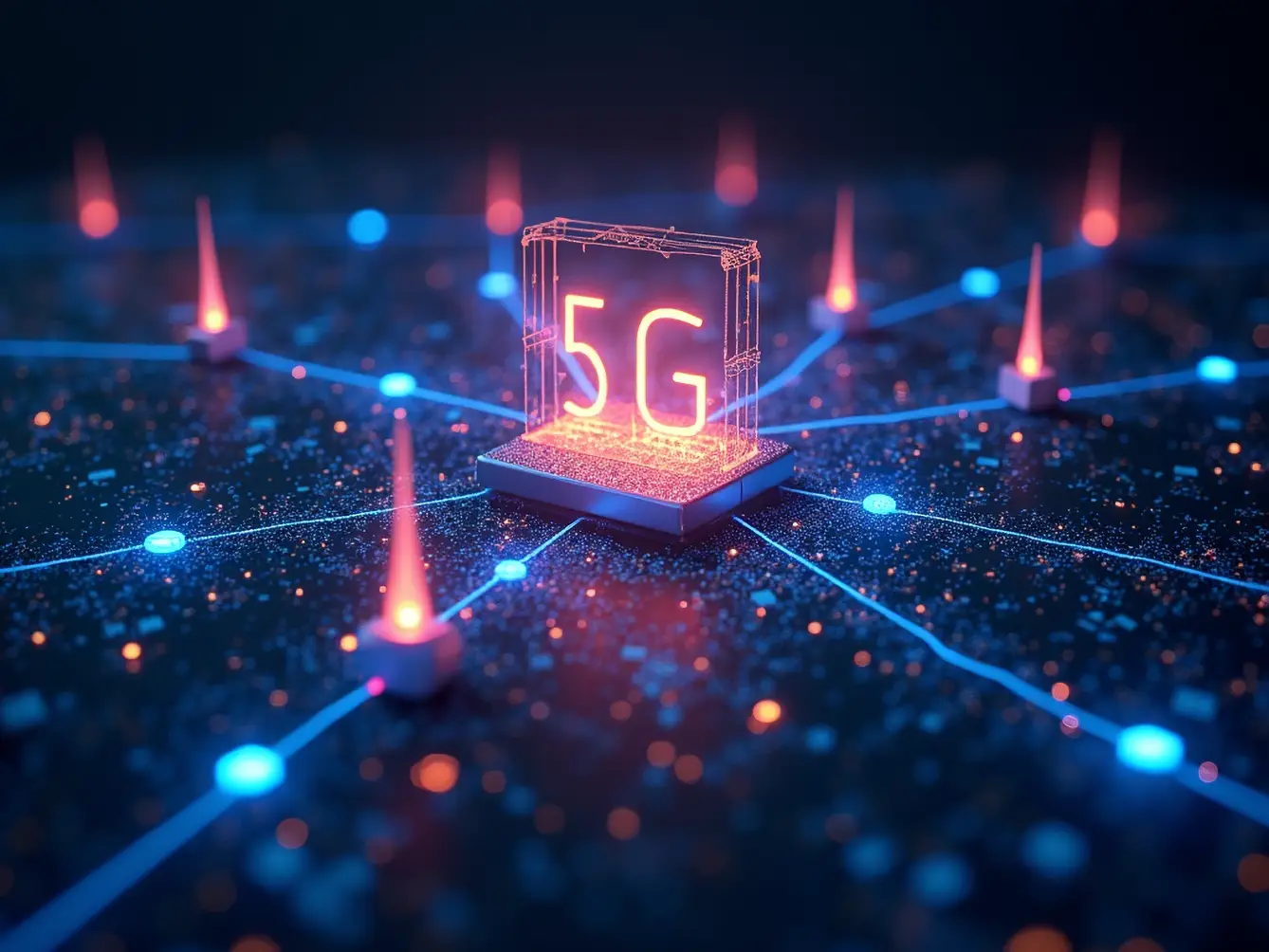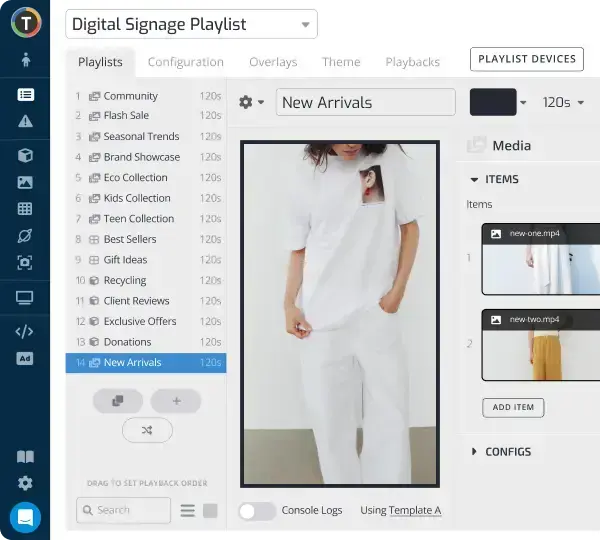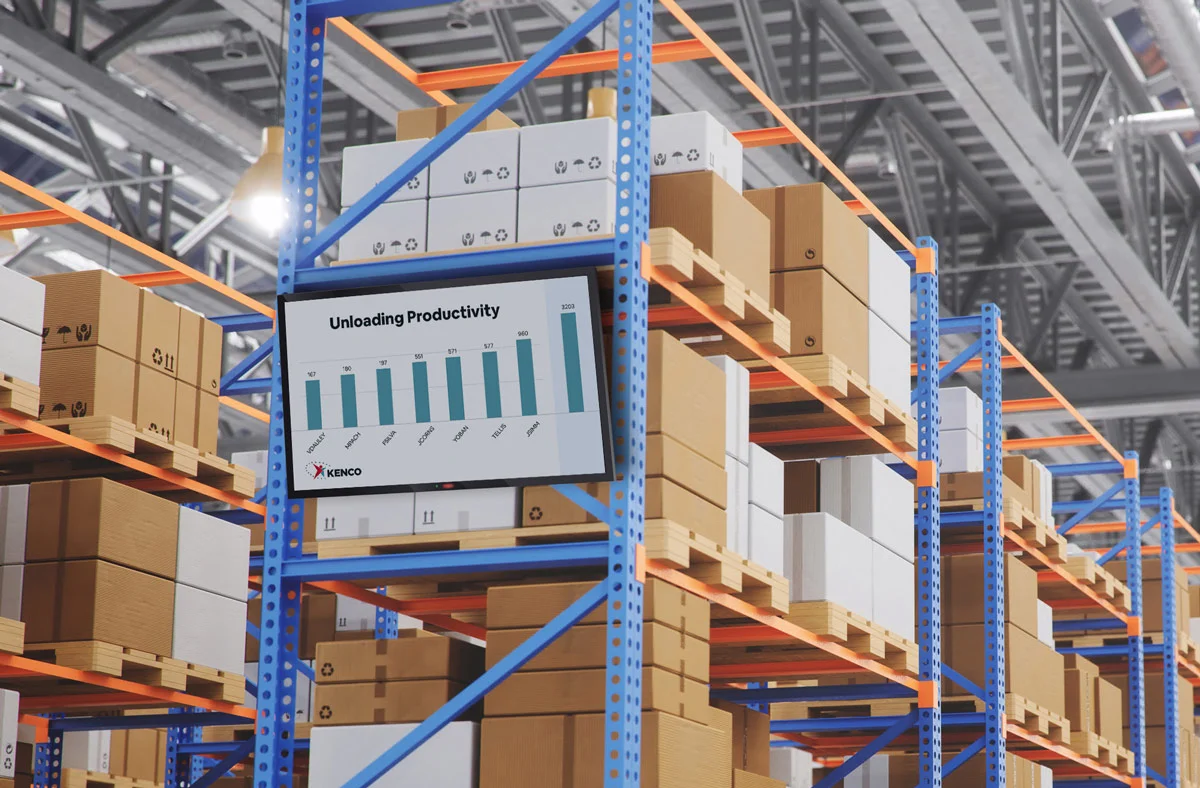5G, PoE, and the Future of Digital Signage
WRITTEN BY: TelemetryTV, 03-14-2025

Digital signage is undergoing a profound transformation, driven by next-generation connectivity and innovative deployment strategies. Two developments—5G and Power over Ethernet (PoE)—stand out for their potential to reshape how organizations power and manage screens across multiple locations. When combined with advances in artificial intelligence, edge computing, and interactivity, these technologies help businesses communicate in more dynamic, data-driven, and efficient ways. Below, we explore the leading trends and highlight how modern digital signage software—exemplified by TelemetryTV—is at the center of it all.
1. 5G: High-Speed Connectivity for Digital Signage Networks

Fifth-generation (5G) wireless offers exceptionally high bandwidth and ultra-low latency, opening new possibilities for digital signage. Media players can stream real-time 4K or 8K video with minimal buffering, enabling immersive visuals in busy, high-traffic environments. Low latency also supports interactive applications, such as in-store touchscreen kiosks or data-driven updates that reflect immediate customer input.
In addition to raw speed, 5G includes network slicing, which lets service providers allocate a dedicated segment of the network for a specific use case. That means a digital signage fleet can have guaranteed performance—even if other users share the same cellular infrastructure. Moreover, 5G networks support connections for thousands of devices simultaneously, making large-scale deployments easier to manage under one framework.
However, 5G coverage can be spotty indoors or in rural areas, and operating costs—like data plans—can add up quickly. Some deployers address these concerns by combining Wi-Fi and 5G failover, ensuring screens remain online even if one connection type becomes unreliable. Another approach is installing external antennas or signal boosters to maintain stable speeds.
Below are some of the main benefits and challenges of 5G:
| 5G Benefits | Challenges |
|---|---|
| Ultra-fast data rates for high-res content | Limited coverage in certain indoor or remote areas |
| Low latency for real-time interactivity | Potentially high data plan costs |
| Network slicing for reliable performance | Requires specialized hardware and setup |
| Large device capacity (IoT scale) | Stronger security measures needed for wireless traffic |
With 5G, digital signage becomes far more adaptable—shoppable video content, live analytics, and AI-driven recommendations can be delivered in seconds. Organizations intent on offering interactive, always-updated displays stand to gain the most.
2. PoE: Simplifying Installation

While 5G addresses connectivity, Power over Ethernet (PoE) tackles the physical complexity of screen deployments. PoE merges power and data into a single Ethernet cable, meaning installers no longer need to run separate electrical lines to each display or media player. This significantly reduces installation costs and reliance on nearby outlets.
PoE is especially beneficial in retrofits or locations where adding wall power is difficult. It also allows centralization of power management: if a device freezes, administrators can remotely reboot it by toggling the PoE port on the network switch. Additionally, devices can receive backup power from a single uninterruptible power supply (UPS), improving overall uptime.
The following table compares PoE-powered signage to traditional power:
| Factor | PoE-Powered Signage | Traditional Power |
|---|---|---|
| Installation | Requires only an Ethernet cable; no electrician needed | Needs separate power cabling or wall outlets |
| Cable Runs | Single cable for data and power | Multiple cables; more complex infrastructure |
| Remote Management | Central reboot and monitoring via network switch | Must physically access the device |
| Power Capacity | Up to 90W (PoE++) for some mid-sized screens | Handles any wattage but at higher install cost |
The main limitations involve power constraints—larger displays may exceed PoE specs—and distance limits (about 100 meters for Ethernet). Still, PoE remains an attractive choice for small to mid-sized displays, media players, and IoT sensors, making deployment more flexible and cost-effective.
3. AI Personalization and Edge Computing
The content on digital displays matters just as much as how they are powered or connected. Emerging trends in AI and edge computing help create more responsive, personalized signage.
AI-Driven Content
By analyzing real-time data—from environmental sensors to inventory levels—an AI system can adapt on-screen messaging to suit the moment. In a store, cameras might detect a younger demographic and display promotions for trending products. Or a quick-service restaurant might highlight hot beverages on a cold morning and switch to cold drinks by noon. This level of fine-tuning has boosted sales and engagement for many retailers, aligning digital signage with consumer expectations for relevant content.
Edge Computing
Running analytics, caching, and decision-making at the device level reduces reliance on cloud servers. Signage remains functional even if its internet connection fluctuates, because content is stored locally. Edge computing also lowers latency, reducing the delay between user actions (such as tapping on a touchscreen) and the system’s response. This results in smoother interactions, which is vital in high-traffic situations.
4. Interactive Displays: Engaging Audiences

Digital signage is no longer a one-way broadcast; it now invites users to explore content directly. From wayfinding kiosks in office lobbies to self-service ordering stations in restaurants, interactivity encourages longer dwell time and deeper engagement.
Surveys indicate consumers are more likely to trust information they can navigate themselves and are more likely to recall a brand after using an interactive display. For organizations in crowded sectors—retail, finance, corporate campuses—this can mean a distinguishing edge in CX.
5. Security Considerations
As networks grow—often mixing 5G and PoE—security becomes paramount. A compromised media player can serve as a foothold into broader systems. Common vulnerabilities include default passwords, unencrypted data transfers, and physical tampering.
Key measures include:
• Use HTTPS or VPN tunnels for data transfers.
• Segment digital signage devices on a separate VLAN.
• Change default passwords, disable unused ports, and apply firmware updates.
• Monitor device behavior for unexpected downtime or resource usage.
Because PoE integrates power and data on one cable, an exposed Ethernet jack might be vulnerable if physically accessible. Network switches with port security or MAC filtering can mitigate these risks. Zero-trust principles should apply to all endpoints, including digital signage.
6. Hardware and Software Compatibility
Organizations adopting 5G and PoE must ensure compatible hardware and digital signage software. Media players or screens may need external 5G routers or built-in modems, while PoE readiness might require splitters if the device lacks native PoE support. Check standards like 802.3af, 802.3at (PoE+), and 802.3bt (PoE++) for adequate wattage.
On the software side, a platform that supports multiple operating systems and offline playback is invaluable. If a 5G connection goes down, pre-cached content keeps the displays running. Leading solutions like TelemetryTV also include security features such as role-based access and encryption, ensuring both reliability and data protection.
7. Scaling Up Across Many Locations
Large organizations—such as those with corporate campuses, retail chains, or distributed offices—benefit the most from 5G and PoE. Cellular backup prevents downtime, while a single Ethernet cable for both data and power drastically reduces installation and maintenance. Central management via digital signage software helps maintain consistent branding and messaging.
Companies like Starbucks, Amazon, BCG, Carvana, and Stanford Medicine already employ advanced digital signage strategies to keep audiences informed and engaged. Across these use cases, cloud-based digital signage CMS orchestrates content, ensuring each location delivers targeted information.
8. Practical Takeaways
1. Optimize Connectivity
2. Simplify Power Delivery
3. Elevate Content with AI and Edge Computing
4. Secure Early and Often
5. Choose Flexible Software
9. Conclusion and Next Steps
From 5G connectivity that enables on-demand updates to PoE installations that cut cabling costs, the latest advances in digital signage are reshaping how organizations communicate. AI-driven personalization and edge computing add real-time relevance, and interactive displays foster deeper engagement. All of this hinges on a secure, flexible digital signage software solution—like TelemetryTV—that integrates smoothly with these breakthrough technologies.
Upgrade Your Digital Signage with 5G and PoE
Power your screens with 5G and PoE for seamless connectivity and effortless deployment. Get started with TelemetryTV's digital signage software today.
Start for Free










